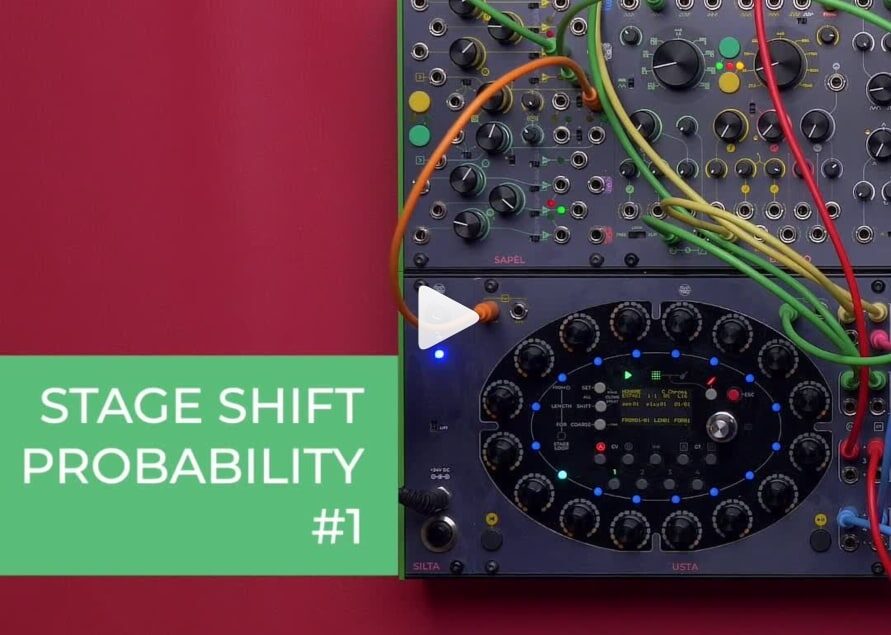- resources /
- techniques /
- Stage Shift Probability #1
This time we want to use a pattern as a probability-based random sequence – and it’s possible through USTA’s Stage Shift parameter!
By routing an external random signal to USTA’s Stage Shift (like SAPÈL’s S&H out), we can randomly scramble our stages’ values. This means that the more a note is present in the sequence, the more likely it will be picked!
In this patch, half of our pattern’s notes are the root note, meaning that it can be played quite often. On the other hand, only two stages out of 16 have the fifth, so it’s less likely to happen.
Some of you may wonder: what about the gaussian distribution? Aren’t the middle notes more likely to be picked? Well, by keeping our sequence 16-stage long, we change the gaussian center at every stage, and we obtain almost a flat random distribution!
This patch idea comes from gattobus – check him out!
INGREDIENTS
- USTA
- BRENSO
- CGM
- FALISTRI
DIRECTIONS
- Set up a track with a single-pattern sequence.
- Fill all the 16 stages with few notes. In this patch, we used just three notes.
- Patch SAPÈL’s S&H out to USTA’s CV A or B in.
- Route the CV in to Stage Shift.
Usta will now randomly pick one of the three notes we entered. The more a note is present across the 16 stages, the higher is its probability to be played.
In this way, a pattern acts as a sort of “probability-based note stash” that we can radomly recall through CV.
